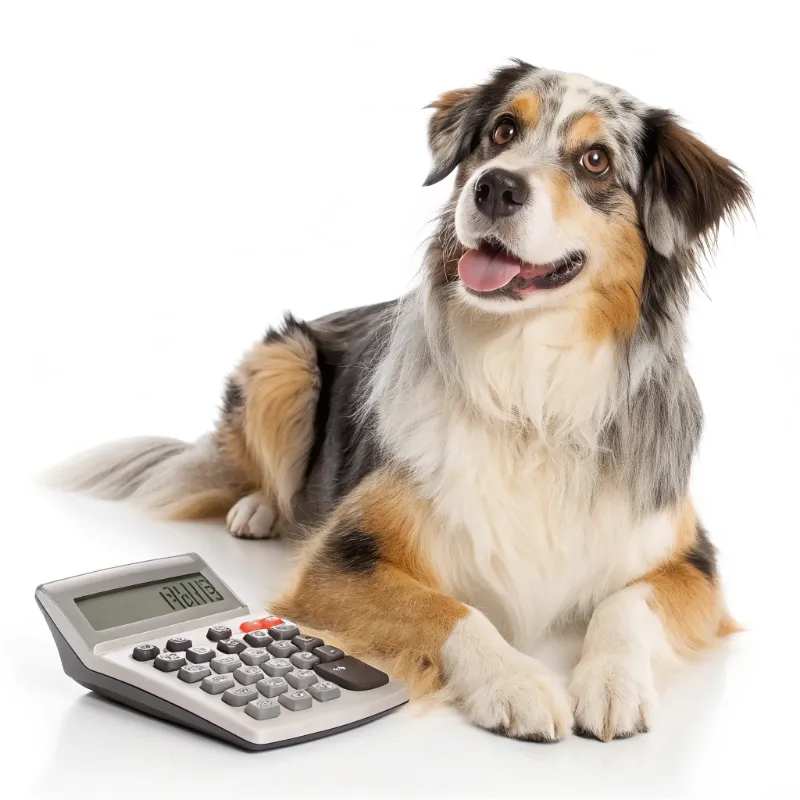Australian Retriever




 Find Reputable Breeders Near You
Find Reputable Breeders Near You
Browse Reputable Breeders who meet Paction's Certification standards.
Search for a PupGet to Know Australian Retrievers
- Double Brainpower: Australian Retrievers come from two of the most intelligent breeds in the dog world. This mix often results in dogs that are not only quick learners but also crave mental stimulation, making them ideal for advanced obedience, agility, or even canine sports like dock diving or scent work.
- Stunning Colors: Thanks to the Australian Shepherd's diverse coat genetics, Australian Retrievers can have eye-catching patterns and colors including merle, sable, red, gold, or even tricolor. Combine that with the lush, wavy texture of the Golden Retriever’s coat, and no two look quite the same.
- Natural Herding Instinct: Even though Golden Retrievers are not herding dogs, the Aussie side of the mix often brings a mild to moderate herding instinct, meaning these dogs may try to “herd” children, other pets, or even adults during play.
- Excel as Therapy and Service Dogs: Their affectionate, people-oriented nature combined with high intelligence makes Australian Retrievers exceptional candidates for therapy, emotional support, or service dog work. They’re especially tuned in to human emotions and eager to please.
- Need Purpose as Much as Play: Australian Retrievers are not couch potatoes. They need both physical and mental outlets to stay balanced. Without enough stimulation, they can become bored, vocal, or mischievous. They thrive in active households where they’re treated as part of the team.
Breed History
The Australian Retriever is a hybrid breed resulting from the cross between an Australian Shepherd and a Golden Retriever, two of the most popular and intelligent dog breeds. While not a registered purebred, the Australian Retriever began gaining popularity in the early 2000s as part of the designer dog trend, which aimed to combine the best traits of two established breeds. This mix brings together the Golden Retriever’s friendly, affectionate nature with the Australian Shepherd’s high intelligence and strong work ethic. The result is a versatile, loyal, and active companion, often sought after by families, active individuals, and those looking for a dog that excels in obedience, agility, and even therapy work. Though relatively new, the Australian Retriever is quickly becoming known for its balanced temperament, trainability, and beautiful appearance.
Personality and Behaviour
- Smart & Eager to Please: With two intelligent parent breeds, Australian Retrievers are quick learners who love having a job or challenge. They respond well to positive reinforcement and enjoy training sessions that engage both their minds and bodies. This combination of smarts and enthusiasm makes them excellent candidates for obedience, agility, or service work.
- Friendly & Affectionate: Australian Retrievers are incredibly friendly and loving dogs that thrive on human companionship. They tend to bond closely with their families and enjoy being involved in daily life, whether it’s snuggling on the couch or going on outdoor adventures. Their affectionate nature makes them especially great with kids and other pets.
- Energetic & Playful: These dogs are naturally active and playful, requiring regular exercise and mental stimulation to stay happy and well-behaved. They love fetch, hikes, and interactive games, and can become restless or bored if under-stimulated. When given enough outlets for their energy, they’re joyful, well-mannered companions with a zest for life.
Care
- Exercise: Australian Retrievers are high-energy dogs that need daily physical activity to stay balanced and happy. They thrive on long walks, runs, hikes, or active play sessions like fetch or tug-of-war. With working and sporting breeds in their lineage, they do best in homes that can provide at least 60–90 minutes of exercise per day and benefit from activities that also challenge them mentally, such as agility or scent games.
- Training: Thanks to their intelligence and eagerness to please, Australian Retrievers are typically highly trainable. They respond well to positive reinforcement techniques and enjoy learning new commands or tricks. Early training and socialization are important to help them develop good manners and confidence, especially since their Australian Shepherd side can sometimes bring a touch of independence or herding instinct. Keeping training sessions fun and varied helps prevent boredom and strengthens your bond.
- Grooming: Australian Retrievers usually have a medium to long double coat that requires regular brushing (about 2 to 3 times a week) to prevent matting and reduce shedding. During seasonal changes, they may shed more heavily and benefit from more frequent grooming. Occasional baths, routine ear cleaning, nail trimming, and dental care are also important to maintain their overall health and hygiene.
Australian Retriever Summary
What to ask your breeder?
Here’s a short summary of what you should be asking your breeder:
Australian Shepherd Health Testing
| Screening | Considerations |
|---|---|
| Hip Dysplasia | OFA Radiographic Hip Evaluation |
| Elbow Dysplasia | OFA Radiographic Elbow Evaluation |
| ACVO Eye Exam | ACVO Eye Examination. Results registered with OFA. |
| Autoimmune thyroiditis | (Optional but recommended) Autoimmune Thyroditis Evaluation from an approved Lab. Results registered with OFA. |
| Collie Eye Anomaly | (Optional but recommended) DNA based CEA test from an approved lab |
| Multiple Drug Sensitivity | (Optional but recommended) DNA based MDR1 test from an approved lab; Results registerd with OFA. First Generation Offspring of tested dogs eligible for Clear By Parentage |
Golden Retriever Health Testing
| Screening | Considerations |
|---|---|
| Hip Dysplasia | One of the following: OFA Radiographic Hip Evaluation PennHIP Evaluation (At least 4 months of age) |
| Elbow Dysplasia | OFA Radiographic Elbow Evaluation |
| ACVO Eye Exam | Annual Eye Examinations. Results registered with OFA |
| Cardiac Evaluation | One of the following: Congenital Cardiac Exam at 12 months or older, with exam by cardiologist Advanced Cardiac Exam Basic Cardiac Exam at 12 months or older, with exam by cardiologist |
How Much Does It Cost to Own an Australian Retriever Per Year?
Determining the cost of owning an Australian Retriever is essential for responsible dog ownership. Use our calculator to estimate expenses, including food, grooming, veterinary care, and more.
The Ultimate Dog Cost Calculator
 Calculate Now
Calculate Now

